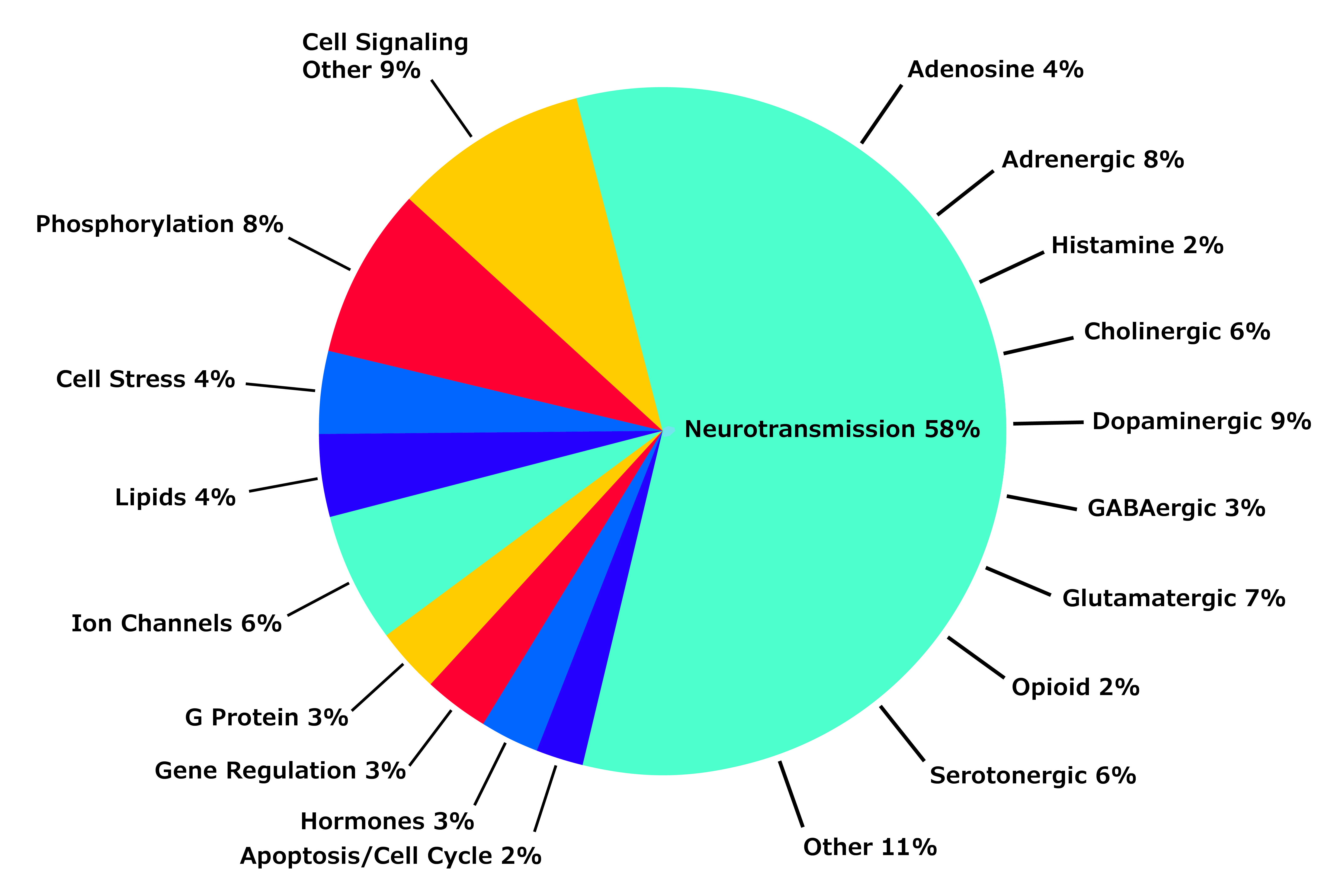LOPAC®1280 Small Molecules Screening
Compound library screening commonly involves performing high-throughput screening to identify possible targets for drug development. Read more about compound libraries for drug development research, such as our popular Library of Pharmacologically Active Compounds (LOPAC®1280) bioactive small molecules.
Read more about
- What Is Compound Library Screening?
- Compound Screening with Biochemical Assays and Cell-Based Assays
- High-Throughput Screening Success Factors
- LOPAC®1280 Small Molecules for High-Throughput Screening
- LOPAC®1280 Features
- Relevant Compounds and Pharmacological Activities
- LOPAC®1280 Compounds in the Literature
- Related Products
What Is Compound Library Screening?
Compound library screening is performed by most pharmaceutical companies during the drug development process through using vast compound libraries to identify potential targets. Searching for an inhibitor that could potentially become a drug requires thousands of data points. Hence, high-throughput screening (HTS) has become essential in this process. The cost pressure in screening is enormous, therefore researchers have opted for miniaturization.
Compound Screening with Biochemical Assays and Cell-Based Assays
Although 96-well formats are still valid for much research, the drug development process seeks microplates with 384, 1536, or even more wells. To save cost, assay volumes have been scaled down to a few microliters. At the behest of regulatory guidance, drug developers today often complement biochemical assays with cell-based assays.
The advantage of cell-based assays is that the target is in an intact cell in its native form, and the data generated may be more predictive of in vivo compound performance. However, one drawback of cell-based assays is that many hits are generated, which might include “off-target” hits. This is particularly true in studies involving long, multicomponent signaling pathways. In addition, cell-based assays may be confounded by cytotoxicity problems, which may reduce assay signal even without inhibition of the relevant target. Biochemical assays can be performed at higher inhibitor concentrations than cell-based assays, thereby providing complementary data.
High-Throughput Screening Success Factors
A good HTS program requires three success factors:
- Reproducible, predictive biological assays
- A high-quality HTS compound library
- The ability to test the library in the assay in a timely and cost-effective manner
Of these three success factors, the quality of the compound library is of utmost importance. In the early era of combinatorial chemistry, many compounds were developed at random. Several of these were of high molecular weight and were not suited for physiological studies. Besides, these early libraries were limited by poor quality control, lack of solubility data, and questionable integrity of compounds upon storage.
LOPAC®1280 Small Molecules for High-Throughput Screening
The power and performance of the bioactive small molecules in our Library of Pharmacologically Active Compounds (LOPAC®1280) portfolio are assured, making them ideal for HTS applications. This biologically annotated collection of inhibitors, receptor ligands, pharma-developed tools, and approved drugs impacts most signaling pathways and covers all major drug target classes.
LOPAC®1280 Features
Features of the LOPAC®1280 portfolio include:
- 1,280 pharmacologically active compounds
- All major target classes are represented, including G protein-coupled receptors (GPCRs) and kinases, making LOPAC®1280 bioactive small molecules the most flexible target characterization and assay validation library available.
- Marketed drugs and pharmaceutically relevant structures annotated with biological activities
- Predictable activities and proven scaffolds directed against a wide range of drug targets to guide repurposing applications.
- Pre-solubilized and normalized compounds to guide repurposing applications
- Ready-to-use DMSO stocks require less time-consuming sample preparation.
- Guaranteed quality and easy re-supply
- Highly pure compounds, each available as an individual catalog item.

Figure 1.Breakdown of the LOPAC®1280 target classes.
The LOPAC®1280 library includes a variety of compounds described in Figure 1 including:
- Antiproliferatives
- Enzyme inhibitors
- Approved drugs
- Pharma-developed tools
- Apoptosis inducers
- GPCR ligands
Related Products
如要继续阅读,请登录或创建帐户。
暂无帐户?